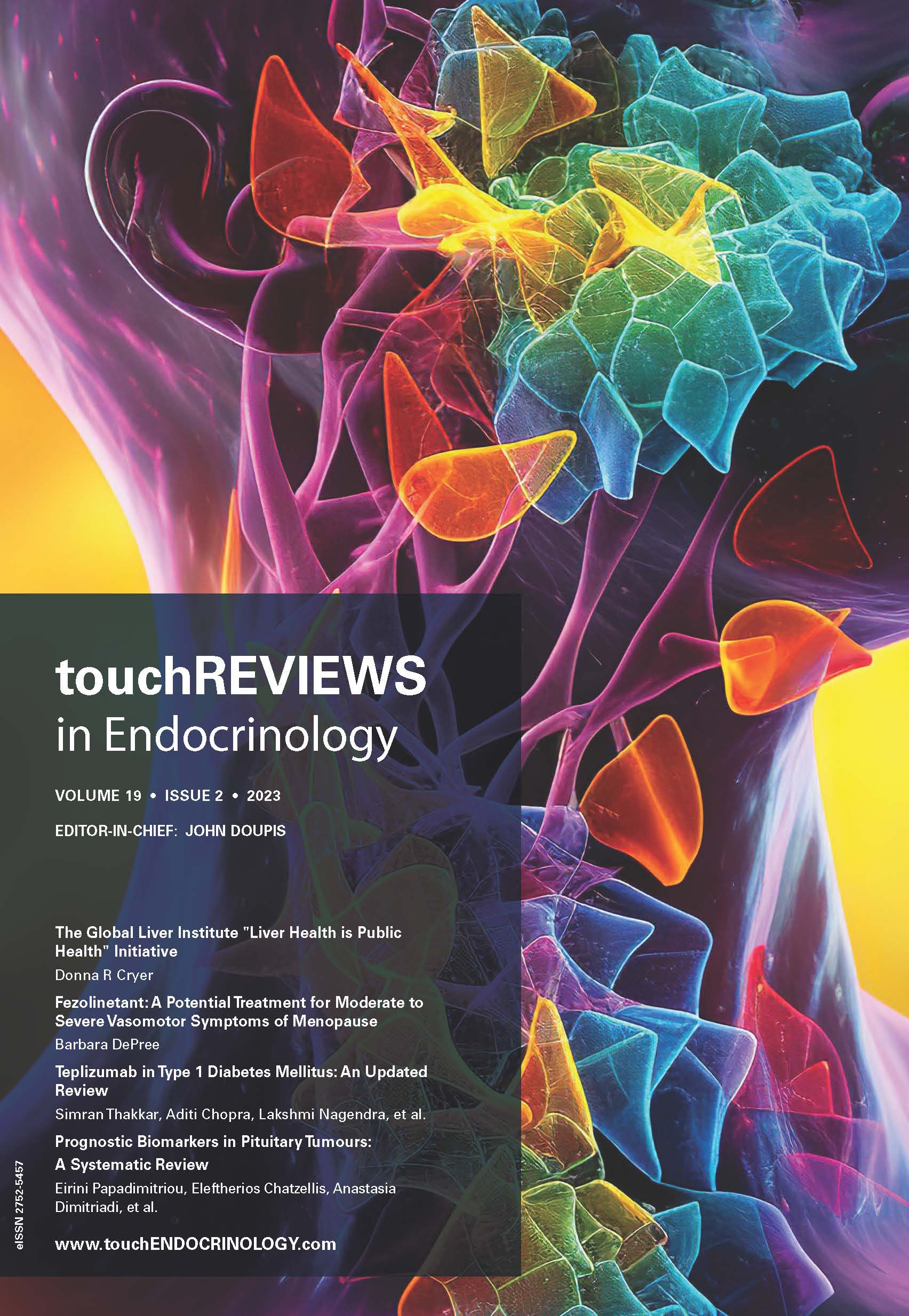EUROPEAN ENDOCRINOLOGY – VOLUME 8 ISSUE 2 – WINTER 2012
Diabetes Immunology
Type 1 diabetes is classified into two types by the American Diabetes Association; type 1A diabetes is the immune-mediated form and type 1B the non–immune mediated form of the disease, both leading to β-cell destruction and absolute insulin deficiency. It is estimated that approximately 1.5 million people in the US have type 1A diabetes. The […]
Diabetes Management
Diabetes and ischaemic stroke are common conditions that often co-occur. The relationship between diabetes and stroke is bidirectional.
Patients with type 2 diabetes commonly experience fatigue, which may be incapacitating and adversely affect self-care regimens.,sup>1–7 Fatigue is a perplexing problem for healthcare providers.8 Wessely suggests that because fatigue is a non-specific and universal symptom, chronic fatigue is challenging to diagnose and treat.9 Fatigue researchers do not have a standardised definition, measurement approach, or […]
Diabetic Nephropathy
Diabetic nephropathy (DN) has become the most frequent cause of terminal renal failure in western countries. Its natural course has been well described and includes the development of functional and structural degenerative changes in the kidney. More specifically, glomerular membrane thickening, mesangial matrix expansion, microvascular changes, arteriolar hyalinosis and tubular degeneration are characteristic aspects of […]
Diabetes and Periodontal Disease
Periodontitis is a bacteria-related, chronic inflammation that results in destruction of the bone and connective tissue support of teeth forming periodontal pockets between the tooth and gingival soft tissue.1 It is initiated by inadequate oral hygiene and the development of a biofilm colonised with pathogenic bacteria on the tooth surface that results in direct damage […]
Neuroendocrine Tumours
Neuroendocrine tumours (NETs) are rare neoplasms that arise from neuroendocrine cells which are present throughout the body.
Pituitary Disorders
Cushing’s disease is caused by a pituitary adenoma that secretes elevated levels of adrenocorticotropic hormone (ACTH), which stimulates the adrenal glands to produce excess cortisol.1 The tumours are most frequently microadenomas (≤1 cm in diameter) while corticotroph macroadenomas are responsible for approximately 10 % of cases.
Acromegaly is an endocrine disorder and is characterised by soft tissue enlargement and excessive skeletal growth with acral enlargement and coarse facial features. The incidence of acromegaly is approximately 3.3/1,000,000.0/year and the prevalence is 60/1,000,000.1 Although a rare condition, the clinical, economic and health-related quality of life (HRQoL) burden associated with acromegaly is considerable owing […]
The transition period is the span of time in which people complete their somatic and psychological development after reaching their full stature (also known as late teenage years, post-adolescence or young adulthood). It starts in late puberty and comes to an end at around 25 years of age, thus lasting from three to 10 years. […]
Pituitary tumours are common, with an estimated prevalence of 16.7 % in the general population based on imaging and autopsy studies.1 Clinically significant pituitary tumours are more prevalent than previously recognised, with one case per 1,000–1,300 people.2,3 The majority of pituitary tumours are indolent, slow-growing neoplasms. However, 40–50 % of pituitary tumours are locally invasive […]
Thyroid Disorders
Malignancies of the thyroid can be classified as either of follicular cell origin or parafollicular C-cell origin.

Trending Topic
Thyroid eye disease (TED), also known as Graves’ orbitopathy, is a complex autoimmune disorder driven by an interplay of immune cells, orbital fibroblasts and tissue remodelling factors that lead to inflammation, oedema and, ultimately, potential vision loss.1 While the disease has historically been challenging to manage, recent therapeutic innovations are reshaping treatment paradigms and offering new […]
Journal Archive
touchREVIEWS in Endocrinology (previously European Endocrinology) is a peer-reviewed, free-to-access, bi-annual journal comprising review articles, case reports, editorials, special reports and original research. It features balanced and comprehensive articles written by leading authorities, addressing the most important and salient developments in the field of endocrinology.
Latest articles videos and clinical updates - straight to your inbox
Log into your Touch Account
Earn and track your CME credits on the go, save articles for later, and follow the latest congress coverage.
Register now for FREE Access
Register for free to hear about the latest expert-led education, peer-reviewed articles, conference highlights, and innovative CME activities.
Sign up with an Email
Or use a Social Account.
This Functionality is for
Members Only
Explore the latest in medical education and stay current in your field. Create a free account to track your learning.






